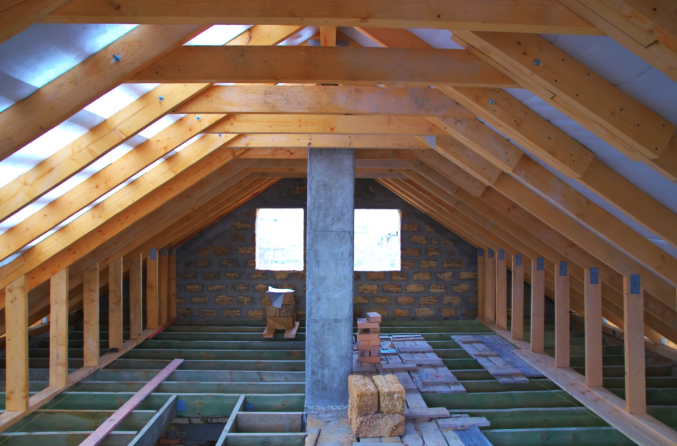Fiberglass Batt Insulation
When you think insulation, you probably think of fiberglass. Known for being fluffy, pink, (though it also comes in yellow, green, and white) and itchy, it’s been the main insulation used in homes for decades. It is a man-made, naturally sound-absorbent material and is typically the least expensive insulation option. And it might surprise you to learn that much of the fiberglass insulation used today is made from around 50 to 70 percent recycled materials.
When disturbed, fiberglass insulation releases particles in the air that are irritating to our respiratory systems. These fibers can irritate asthma and in severe cases, they can cause bronchiolitis obliterans– also known as popcorn lung. These afflictions are typically only found in construction workers or people who are in continual contact with insulation, not in homeowners.
Dense Packed Cellulose Insulation
The oldest form of home insulation, cellulose is a plant-based material that can be made from sawdust, cotton, straw, hemp, and other plant-based materials. The older versions of cellulose were very flammable. Modern cellulose uses recycled newspapers that are chemically treated to make them flame-resistant and help reduce pest issues. As with fiberglass, the insulation process should be done using the proper PPE (Personal Protective Equipment).
Cellulose is relatively inexpensive and can be blown-in to create a tighter seal and reduced airflow. It’s also a bit simpler to properly install than fiberglass batts because installers do not need to cut and fit pieces to fit around doors, windows, or odd-shaped walls. Dense packed cellulose requires special equipment and trained personnel, so you don’t blow-out your drywall.
The number one drawback of cellulose insulation is settling. In some ways, this does create tight seals, but over time, it will pack down and create air pockets. If exposed to water or moisture, cellulose also takes a bit longer to dry out than other insulation options.
RetroFoam Spray Foam Insulation
The biggest difference between RetroFoam and other insulation is unlike cellulose or fiberglass insulation, RetroFoam will not settle over time. RetroFoam also works really well in concrete block foundations or cathedral ceilings – spaces sometimes difficult to insulate using other forms of insulation.
The benefits of using RetroFoam in your building includes:
- Superior soundproofing
- Completely non-toxic and a Class 1 fire rating
- Keeping your space cooler in the summer and warmer in the winter
- Making your building more energy efficient
- Helping you save on your air conditioning and heating bills
- Potentially extending the lifespan of your HVAC systems
You can add RetroFoam to existing walls relatively easily without removing walls. RetroGreen’s Energy team can improve your energy savings and year-round comfort in less than a day.
If you would like to learn more about RetroFoam insulation, contact the experts at RetroGreen Energy.
